Vidste hun noget om skoven
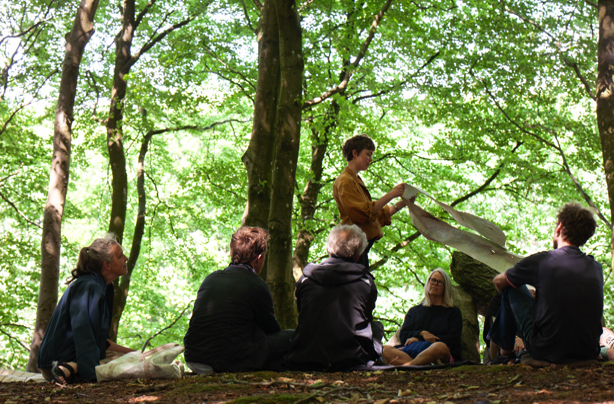
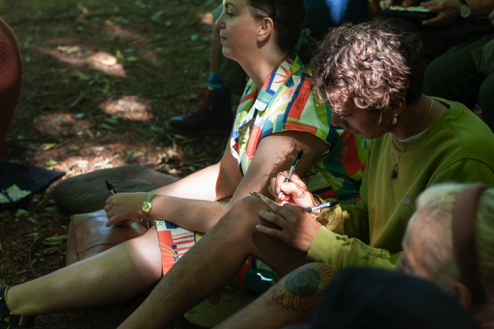
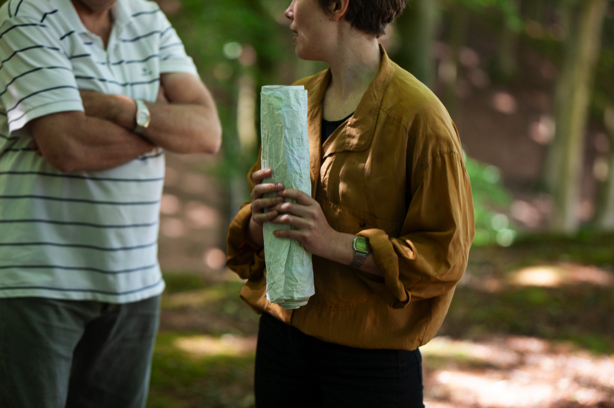
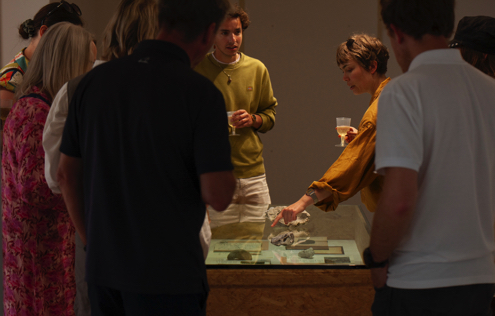
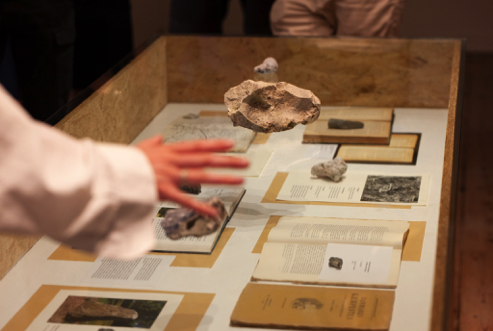
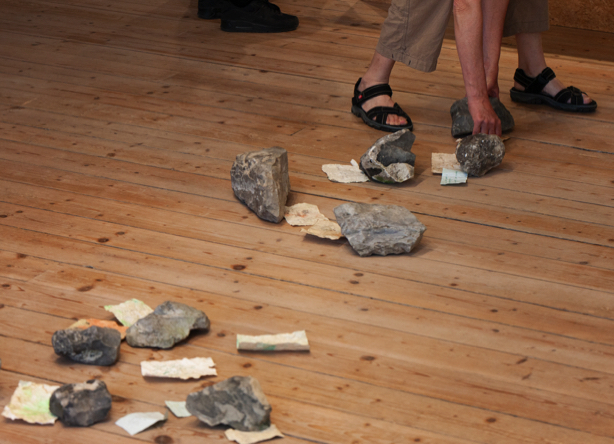
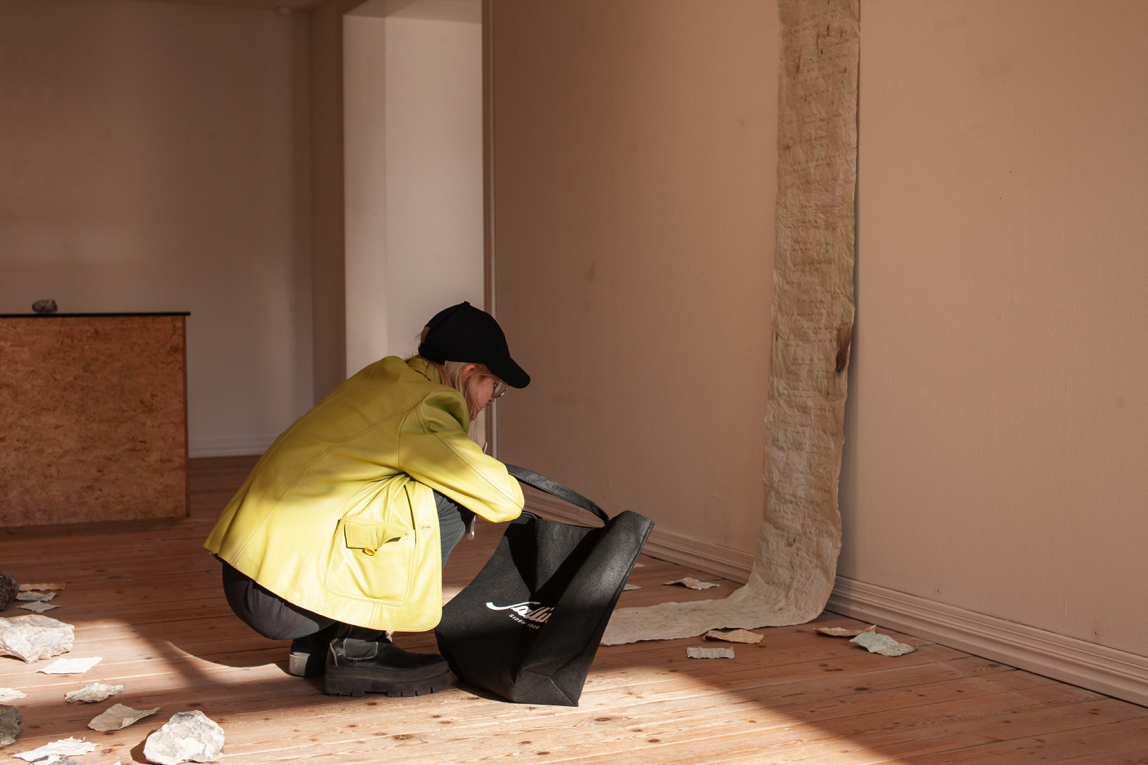
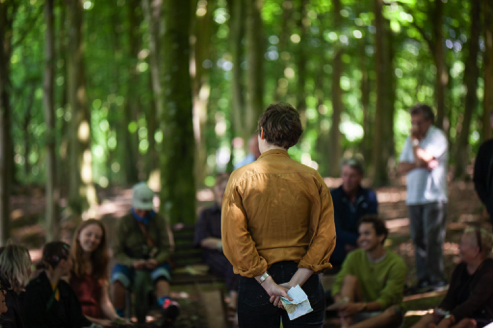
vidste hun noget om skoven
Site-specific participatory performance with handdyed paper, 30 minutes, 2023
Site-specific solo exhibiton and performance at Sankt Knuds Kilde & P. Nørkjærs Plads in Hjørring, 2023
The exhibition and the performance are based on the myth of Kællingstenen (The Crone Stone) recorded in 1886 by folk- lorist Evald Tang Kristensen. In summary the myth is about a woman, who dies. Sh is described onlyas "evil", and after her death her spirit couldn't find rest, but wandered in the night creating a valley where she walked. People were afraid to cross the valley, so they tried several ways to get rid of her ghost, but to no luck. Finally, a priest succeeded in conjuring her ghost underground and in order to make sure it stayed there, a large stone was driven down on the spot. In Kristensens recording of the myth the woman is not directly described as a witch, but stories of witches' sabbaths are linked to the stone's original location. In the last century the stone has been moved several times, which suggests her spirit might be free aigain. Maybe the time has come to tell her story, now that she is no longer held down by the stone?
The performance and the exhibition look at what Kristensen didn't record, namely the woman's perspective - who was she really? – as well as the witch as both a mystical and historical figure, who is highly relevant today in dis- cussions about care work, knowledge of nature, gender and power.
Meanwhile, large stones are rare and threatened in Denmark: Since the arri- val of agriculture some 6000 years ago the stones that were left behind by the glaciers have been removed to make space for fields or broken up and used as building material. In modern times their cultural significance has been largely forgotten, and their role in nature overlooked. On the one hand, they play central roles in the preservation of folklore, and on the other hand they contribute to biodiversity as important habitats for insects, mosses and lichens.
The exhibition seeks to make room for the overlooked stories of both the stones and the woman from the myth of Kællingstenen. The performance took place in Sankt Knuds Kilde, Hjørring, June 24, the day after Sankt- hansaften (Saint John's Eve), when witch effigies are traditionally burned on bonfires. I began the performance with a reading of the 1886 myth of Kællingstenen, and then in following with Danish Sankthans tradition I held a speech in which I reflected on the history and journey of Kællingstenen and the woman, who the name refers to. The myth has very little detail about her life, her death and even her alleged evil deeds. What was she like and how did she get such a horrible reputation?
The installation on the floor mimicked glacial erratics, which are areas scattered with stones that have been left behind by glaciers 15,000 years ago. In Denmark they are both rare and protected. Many of these stones have been removed by farmers and used as building materials, and today, only a fraction of the them are left. At the end of the room a display case showed books, texts and photos relating to Kællingstenen, the glacial erratics and to the role of geology in relation to oral traditions.
Narrative Erratics
Installation with found flint and handdyed paper. Through the exhibition period guest added to the work by writing questions on pieces of paper and placing them among the stones.
Dimentions variable, 2023
After the speech I performed a poem composed of 50 ques- tions for the woman, imagining the many ways her life could have played out and who she might have been. Afterwards, I invited the audience to continue the poem with me, by wri- ting more questions for the woman – as an honorary cere- mony for her and an attempt to centre her perspective. We finished by reading our questions to each other and then walked back to the exhibition, where people placed their questions on the floor, making them part of the installation Narrative Erratics.
Photo by Lasse Fisher